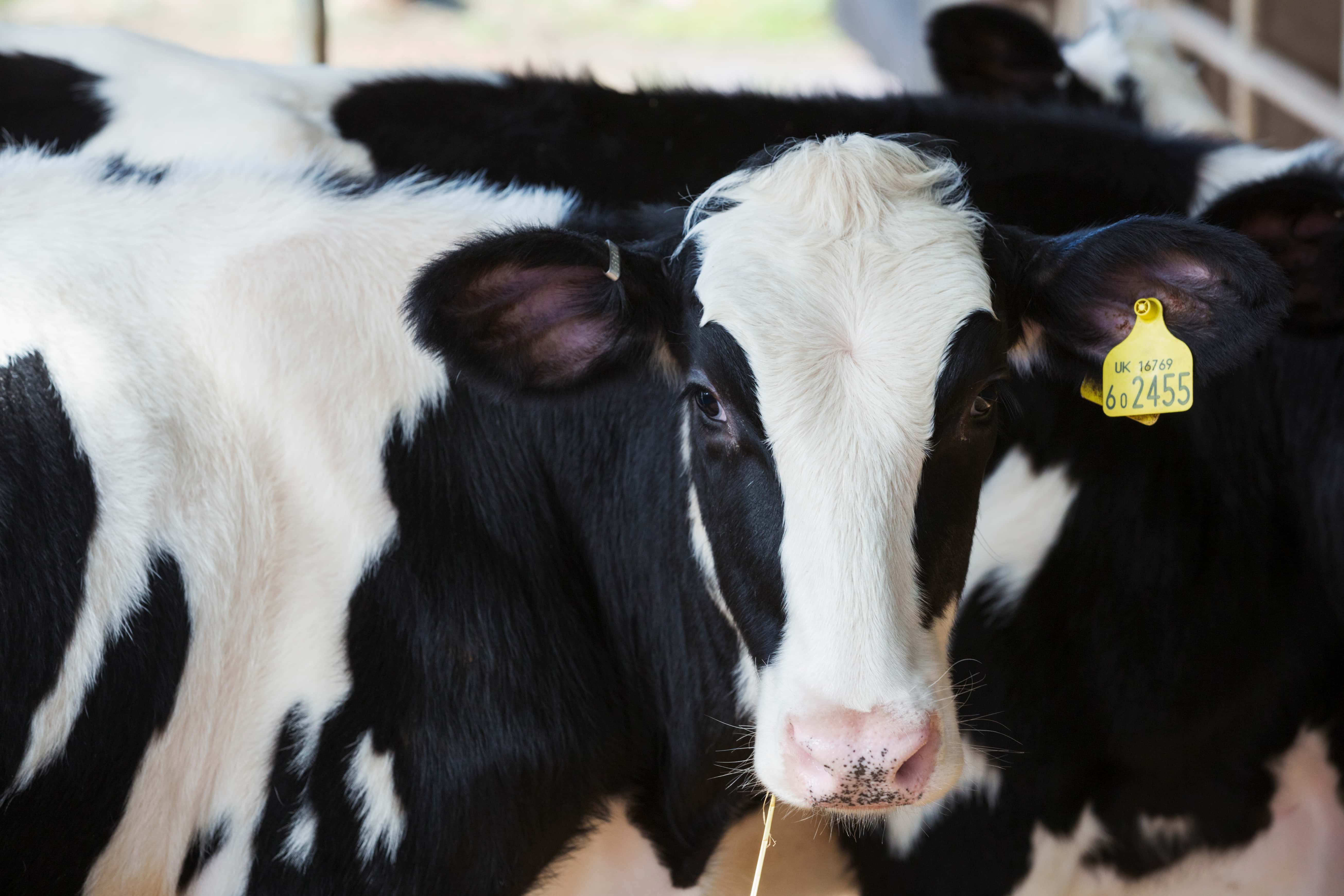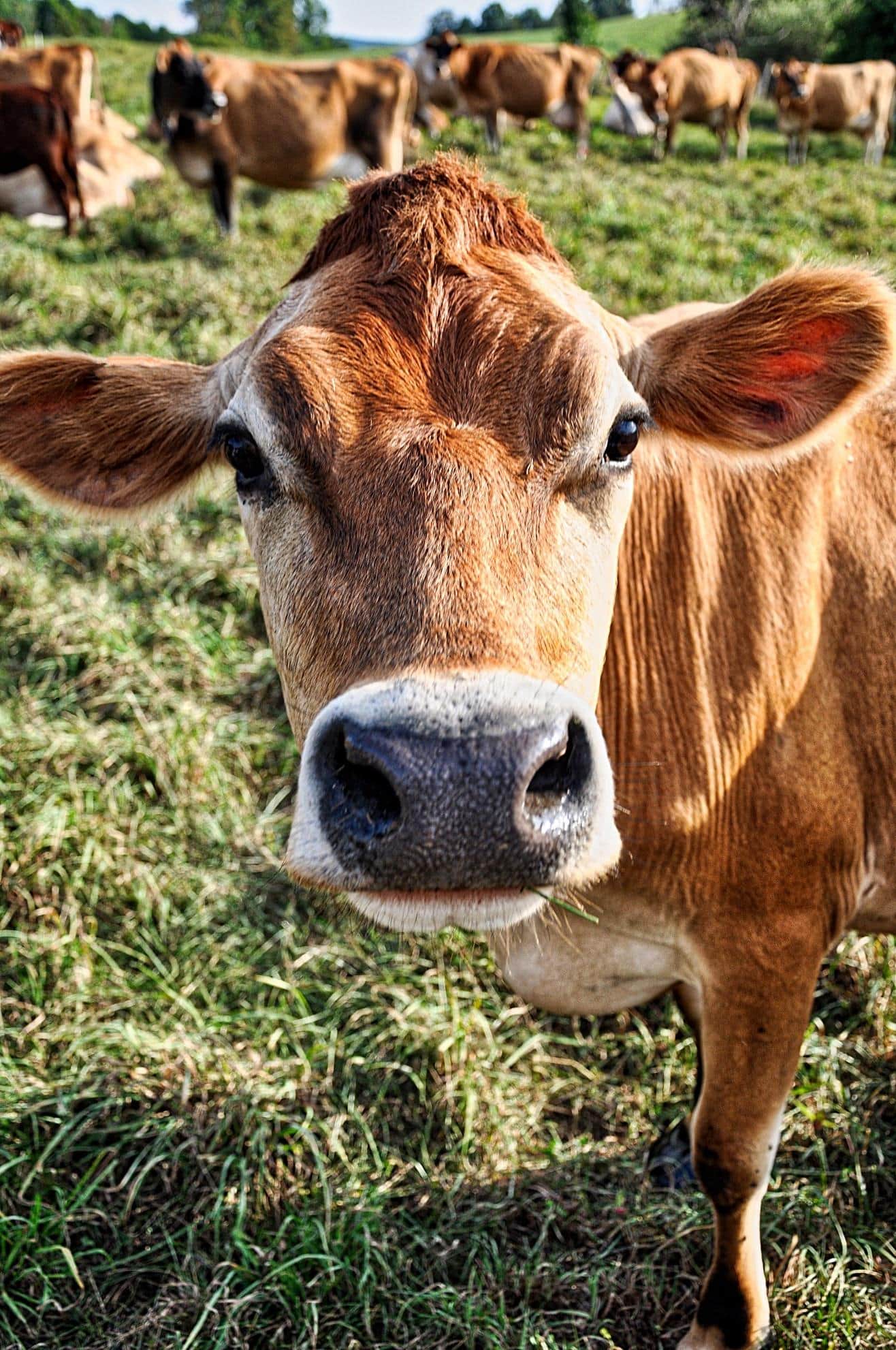So how do you know which cows are going to be the pillars of your pasture?
In this article, we’re going to discuss choosing the best cows for dairy farming. But first, let’s talk group dynamics.
A dairy herd is typically made up of 4 groups of cattle:
Cows: Cows are the females who give birth to calves and produce milk. Most of the cattle in a dairy herd comprise cows.
Bulls: The bulls are the fathers of the herd and usually a few. However, many dairy farms today use artificial insemination to impregnate their cows.
Heifers: Heifers are the younger female cows who either haven’t had a calf at all or have had one calf. They usually make up the second biggest group in the herd.
Calves: Calves are the babies of the herd. Female calves grow into heifers and then milking cows while the male calves are either sold off or raised to become breeders within the herd.
Some stats:
The average size of a dairy herd has increased from 93 cows in 1985 to 261 cows in 2017. There are roughly about 1.5 million dairy cows in Australia and the last year alone, Australian dairy cows produced close to 9 billion litres of milk!
Australia has a huge variety of cattle breeds that are used for dairy farming. Just like how each country has its ethnicities and unique characteristics, each breed has its traits that make them favorable for different situations.
Some breeds are meant solely for beef production, while some can be used for both dairy and beef.
Dairy cattle are breeds that are bred with the main goal to maximise milk output. Since the production of milk requires a high level of energy, dairy cattle require very good nutrition and supplemental feeding, apart from regular pasture grazing, to give them the additional energy they need to produce high-quality and quantity milk.
Your farm’s climate will also play a huge role in determining which breed you decide to pick. Bos indicus cattle breeds like Brahman are suited for hot climates while Bos taurus cattle breeds like Angus and Holstein Friesians are more suitable for cooler and more temperate climates.
Let’s explore a few dairy cow breeds and understand their differences:
Holstein:
If someone asked you, or even a random non-farmer to picture a cow, chances are that the first image that would pop into their heads would be a chubby black and white spotted cow.

It’s no coincidence that the cow that pops up is black and white. This is because the Holstein, with its signature black and white spotted coat, is one of the most prized dairy breeds and the most common in Australia.
- Holstein cows hail from Northern Europe of North America.
- Holstein cows are usually black and white
- They’re one of the most popular breeds of cows in the world, and in Australia too! In Australia, nearly 1.4 million of Australia’s 1.65 million dairy cows are Holsteins.
- They’re docile and not aggressive
- They easily adapt to both grasslands and mixed farming systems, high and low-lying areas.
- Holstein cows can produce 10,000 litres in a year
- Holsteins are one of the biggest breeds of dairy cows. These tall fellas measure to about 1.5 metres tall and weigh over 600 kgs while the bulls are about 1.8 metres tall and can go up to 1000 kgs!
Jersey:
The second most popular breed in Australia, after Holsteins, are Jerseys. These cows are smaller in appearance, caramel-toned and produce a smaller quantity of milk which is rich in butterfat and protein.
Jerseys are a great choice for grass grazing pastures because of their compact size, fertility levels and like we mentioned earlier, their delicious milk that’s loaded with butterfat and protein.
Some things we’d like to point out about Jerseys are:

- Jerseys have black tips on their muzzles, ears, feet and tail
- They are the smallest of all dairy cows and weigh just up to 500 kgs
Aussie Red:
Aussie Reds are bred in Australia by merging Scandinavian Red genetic lines with other Australian Red breeds like the Illawarra and Ayrshire.
- Aussie Reds are medium-sized and red (hence the name!) with distinct white markings that almost look like little maps on the body.
- Milk from Aussie Reds has a high protein content with medium milk-fat content.
Illawara:
The Illawara is developed in the Illawara region of New South Wales. This breed was developed by cross-breeding different breeds. It was then recognized as a new Australian cow breed in 1910.
- Illawara's have a rich red tone with a bit of white on the flanks.
- They are known to produce a good quantity of milk. Up to 40 litres a day!
- Their milk has high protein content and medium milk fat content.
Brown Swiss:
This one hails from the Swiss Alps and is one of the most common breeds in the whole world!
Brown Swiss cows come in different shades of brown, ranging from light to dark. Brown Swiss cows are believed to be one of the oldest dairy cow breeds in the world. They're also soft and tame animals.
Guernsey:
The Guernseys originated from the Isle of Guernsey, a tiny island in the English Channel. They are fawn in color with white markings while their milk is a very distinctive golden color. They’re often fondly referred to as the ‘Royal Breed’ because of their golden milk.
But why is the milk golden? It’s because of a high amount of beta carotene, which is a good source of Vitamin A. Guernseys are medium-sized and usually weigh about 600 kgs and are capable of producing about 22 litres of milk in a day.
Ayrshire:
Ayrshires are originally from Scotland. Hailing from the Country of Ayr, they were later imported to Australia and bred locally. Their colors vary from light tones to deep cherry reds, mahogany, brown, or even just all-white. Ayrshires have a medium to high milk composition and a medium-high milk yield.
Many farmers also opt for cross-bred cows which could be a mix of two or more breeds. Crossbreds are high on hardiness, fertility, can tolerate heat better than purebreds and also produce good quantities of milk.
Farmers choose cows that are best suited to the environment that their farms are in, their style of farming, as well as their personal preferences. On the whole, Holsteins and Jerseys are the most popular choices for dairy farming in Australia.
If you found this article interesting, you may also enjoy our other stories about the dairy industry.
Until we meet again, Happy Farming!
- The Dedicated Team of Pasture.io, 2020-11-30